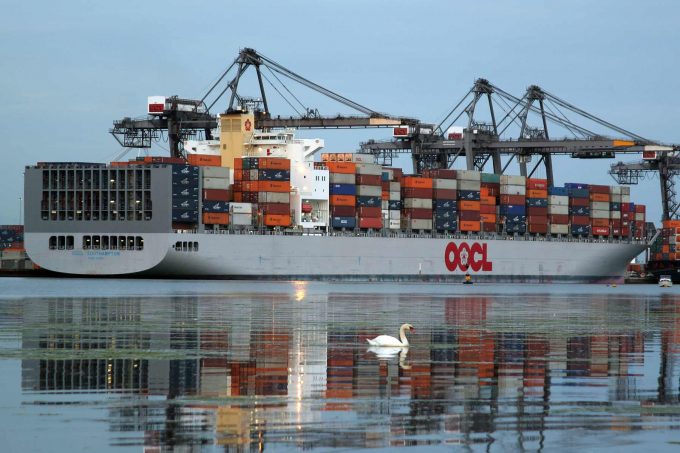'New services and focus on profitability' produce bumper Q3 for HMM
South Korean container carrier HMM was today the latest carrier to report bumper third-quarter figures ...
UPS: MULTI-MILLION PENALTY FOR UNFAIR EARNINGS DISCLOSUREWTC: PUNISHEDVW: UNDER PRESSUREKNIN: APAC LEADERSHIP WATCHZIM: TAKING PROFITPEP: MINOR HOLDINGS CONSOLIDATIONDHL: GREEN DEALBA: WIND OF CHANGEMAERSK: BULLISH CALLXPO: HEDGE FUNDS ENGINEF: CHOPPING BOARDWTC: NEW RECORDZIM: BALANCE SHEET IN CHECKZIM: SURGING
UPS: MULTI-MILLION PENALTY FOR UNFAIR EARNINGS DISCLOSUREWTC: PUNISHEDVW: UNDER PRESSUREKNIN: APAC LEADERSHIP WATCHZIM: TAKING PROFITPEP: MINOR HOLDINGS CONSOLIDATIONDHL: GREEN DEALBA: WIND OF CHANGEMAERSK: BULLISH CALLXPO: HEDGE FUNDS ENGINEF: CHOPPING BOARDWTC: NEW RECORDZIM: BALANCE SHEET IN CHECKZIM: SURGING

EU ETS surcharge estimates for all the top carriers have now been released, with OOCL and HMM the latest to publish their figures.
In a customer advisory, OOCL said: “It is inevitable that the EU ETS will generate additional costs connected to us and the whole industry. As a responsible party in the supply chain, cargo owners or shippers should be prepared to share this cost.”
It said its surcharge figures would be “subject to monthly reviews” that correspond with the latest EUA [the EU allowance per tonne of CO2 emitted] price, and additional costs incurred in relation to the ETS.
CMA CGM told customers its ETS surcharge was based on the current EUA price of €80. This means that, while its Asia to North Europe and Asia to Mediterranean rates remain unchanged, its Europe to North America surcharge has decreased by €3.
The carrier added: “The surcharge amounts will be reviewed on a quarterly basis.”
This has highlighted that the volatile price of EUAs adds another layer of complexity to the surcharge, making it hard for the industry at this stage to fully predict how much it will cost.
While currently the price of EUAs is €80, they are not due to be surrendered until September 2025, so there is a high chance the price will change, which means carrier surcharge estimates can vary considerably.
However, Oceanscore MD Albrecht Grell said last week: “Shipping is so awfully efficient that this cost won’t make much of a difference.”
And Lars Jensen, CEO of Sea Intelligence Consulting, seemed to agree on last month’s Loadstar Podcast, when he said he didn’t see costs associated with the EU ETS as something that would be destructive to the industry, merely “a mild nuisance”.
Despite the 1 January implementation date looming, some aspects of EU ETS law are yet to be finalised, including the increasingly contentious issue of non-EU ports – particularly those in the Mediterranean basin – using the ETS lever to win transhipment traffic from their European competitors.
The list of nearby non-EU gateways considered as transhipment ports will be published by 31 December, and will likely be reviewed every two years.
How EU regulators ultimately try to level this playing field remains open to question, however.
Comment on this article